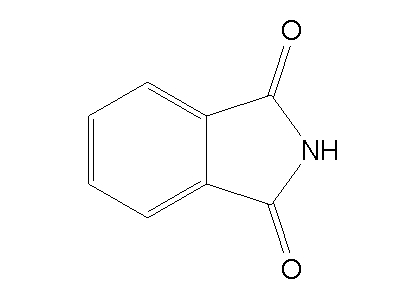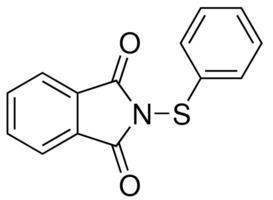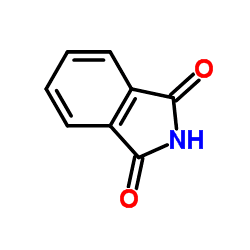Related compounds Boiling point 336 °C | Formula C8H5O2N Appearance White solid | |
 | ||
Phthalimide is the organic compound with the formula C6H4(CO)2NH. It is the imide derivative of phthalic anhydride. It is a sublimable white solid that is slightly soluble in water but more so upon addition of base. It is used as a precursor to other organic compounds as a masked source of ammonia.
Contents
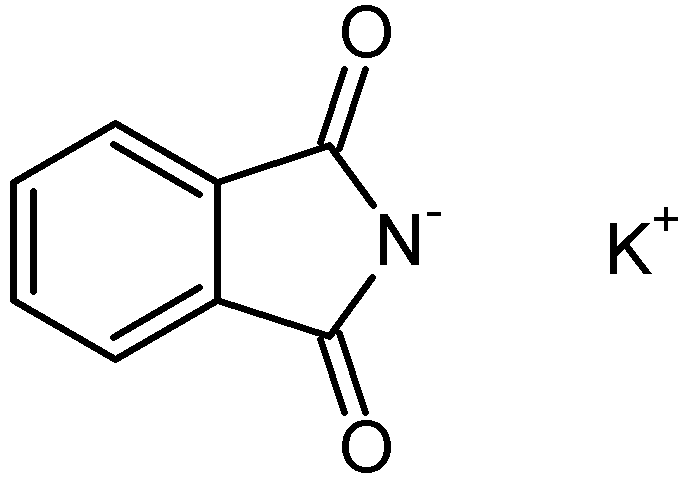
Preparation
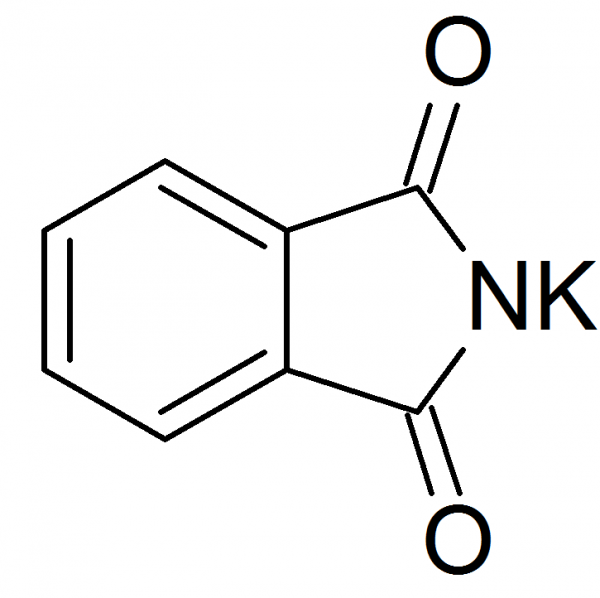
Phthalimide can be prepared by heating phthalic anhydride with aqueous ammonia giving 95-97% yield. Alternatively, it may be prepared by treating the anhydride with ammonium carbonate or urea. It can also be produced by ammoxidation of ortho-xylene.
Uses
Phthalimide is used as a precursor to anthranilic acid, a precursor to azo dyes and saccharin.
Alkyl phthalimides are useful precursors to amines in chemical synthesis, especially in peptide synthesis where they are used "to block both hydrogens and avoid racemization of the substrates". Alkyl halides can be converted to the N-alkylphthalimide:
C6H4(CO)2NH + RX + NaOH → C6H4(CO)2N-R + NaX + H2OThe amine is commonly liberated using hydrazine:
C6H4(CO)2NR + N2H4 → C6H4(CO)2N2H2 + RNH2Dimethylamine can also be used.
Some examples of Phthalimide drugs include Thalidomide, Amphotalide, Taltrimide & Talmetoprim.
Reactivity

It forms salts upon treatment with bases such as sodium hydroxide. The high acidity of the imido N-H is the result of the pair of flanking electrophilic carbonyl groups. Potassium phthalimide, made by reacting phthalimide with potassium carbonate in water at 100 °C or with potassium hydroxide in absolute ethanol, is used in the Gabriel synthesis of primary amines, such as glycine.
Natural occurrence

Kladnoite is a natural mineral analog of phthalimide. It is very rarely found among a few burning coal fire sites.
Safety
Phthalimide has low acute toxicity with LD50 (rat, oral) of greater than 5000 mg/kg.
General reading (textbooks)

